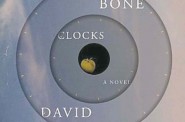Midnight on the Continent of Good and (Super) Evil
A new Spanish Civil War-era spy novel from Alan Furst transports readers to a simpler time…when no one can be trusted.
A master story teller spins tales that transport us through space and time. This kind of escapist fare is perfectly suited for summertime. And there is no better writer of this type of book than spymaster Alan Furst. This week’s recommended reading is his newest novel, Midnight in Europe.
Stories of historic espionage hold great attraction for authors and readers alike. The atmosphere is recognizable, characters seem to step out of films like Casablanca and Julia, and the exotic destinations make us want to drop everything and book reservations immediately. The writer is not bothered by contemporary political currents and can conjure images from our collective past.
For Midnight in Europe Furst uses the Spanish Civil War as a backdrop, sketching a continent in uproar. Not unlike our own time, the late 1930’s were chaotic, dangerous, and often deadly. These elements map out the perfect territory for a vintage spy story.
Furst’s main character is Christian Ferrar, a displaced Spanish lawyer living a stylish exile in Paris. The forces of the Spanish Republic request his assistance in their struggle against fascism and General Franco. This includes a complex arms deal that takes our hero to Warsaw and Istanbul. As in most spy novels, nothing is as it seems and no one can be trusted.
Ferrar comes in contact with a motley crew of Republican sympathizers: Max de Lyon, a wily arms dealer; Maria Cristina, an elegant Spanish marquesa; Stavros, a Macedonian bear-of-a-man; and Eileen Moore, a pulp novelist whose allure draws our hero into a passionate love affair. Wars make strange bedfellows and Furst makes good use of the sexual tension bubbling below the surface during those dangerous times.
One of the greatest pleasures of the historical novel is the presence of absolute villainy. The modern world seems to lack those undisputedly hated types required for all-out fight between the forces of good and evil—although a few leaders today seem to vying for the position. Nazis and Fascists are portrayed as imminently hissable scum. There is satisfaction is seeing them get their just rewards, though it would be another decade before true resolution.
In some ways, the pre-war landscape of Europe is easier to understand than the problematic eddies of contemporary events. The comfort derived from that realization is eventually disconcerting. A world at war over the sovereignty of nations is morally acceptable in a way that a war against terrorism never seems to be. Furst revels in the opportunity to show the evils of the Nazis and Fascists in a way that writers often can’t when dealing with modern enemies. The verdict of history makes absolutes more palatable.
Well-written and enlightening entertainments like Midnight in Europe give us pleasure because they make us forget our own worries and take us back to a simpler time. Truly heroic characters reassure us that there are ideals worth dying for. The fact that the chaos of the past was resolved in a way that allowed all parties to eventually work together should give us some hope. Alan Furst is fully aware of how we might benefit from reading about such heroic efforts. He uses them to thrill and inspire us. And so it is difficult to label such quality fiction as “escapist.”
Spotlight on Local Writers: Paul H. Geenen
Milwaukee resident Paul Geenen has recently published a book of local history, Civil Rights Activism in Milwaukee: South Side Struggles in the ‘60s and ‘70s. It tells the story of the fight to end segregation and discrimination on Milwaukee’s South Side.
Mr. Geenen’s first book, Milwaukee’s Bronzeville 1900-1950 was published in 2006. It was followed by Sherman Park: A Legacy of Diversity in Milwaukee and Schuster’s and Gimbels: Milwaukee’s Beloved Department Stores.
Civil Rights Activism in Milwaukee: South Side Struggles in the ‘60s and ‘70s is published by The History Press. Mr. Geenen’s biography and more information can be found at http://www.paulgeenen.com/www.paulgeenen.com/Welcome.html.
Upcoming Area Book Events:
Monday, August 18 (7:00 PM): Conversation between WUWM Lake Effect’s Mitch Teich and Dan Epstein, author of Stars and Strikes: Baseball and America in the Bicentennial Summer of ‘76 at Boswell Book Company, 2559 N. Downer Ave., Milwaukee.(414) 332-1181 boswell.indiebound.com/Co-sponsored by WUWM Milwaukee Public Radio.
Tuesday, August 19 (7:00 PM) UW-Madison Professor Jordan Ellenberg, author of How Not to Be Wrong: The Power of Mathematical Thinking at Boswell Book Company.
Send your book club picks and author event information to me at info@urbanmilwaukee.com or on Facebook. And good reading!
Booked Up
-
The Poet Who Made Milwaukee Famous
 Apr 7th, 2015 by Richard Davis
Apr 7th, 2015 by Richard Davis
-
Five Great Books I Meant To Review
 Dec 30th, 2014 by Will Stotts, Jr.
Dec 30th, 2014 by Will Stotts, Jr.
-
An Incredible Debut Novel
 Dec 16th, 2014 by Will Stotts, Jr.
Dec 16th, 2014 by Will Stotts, Jr.





















